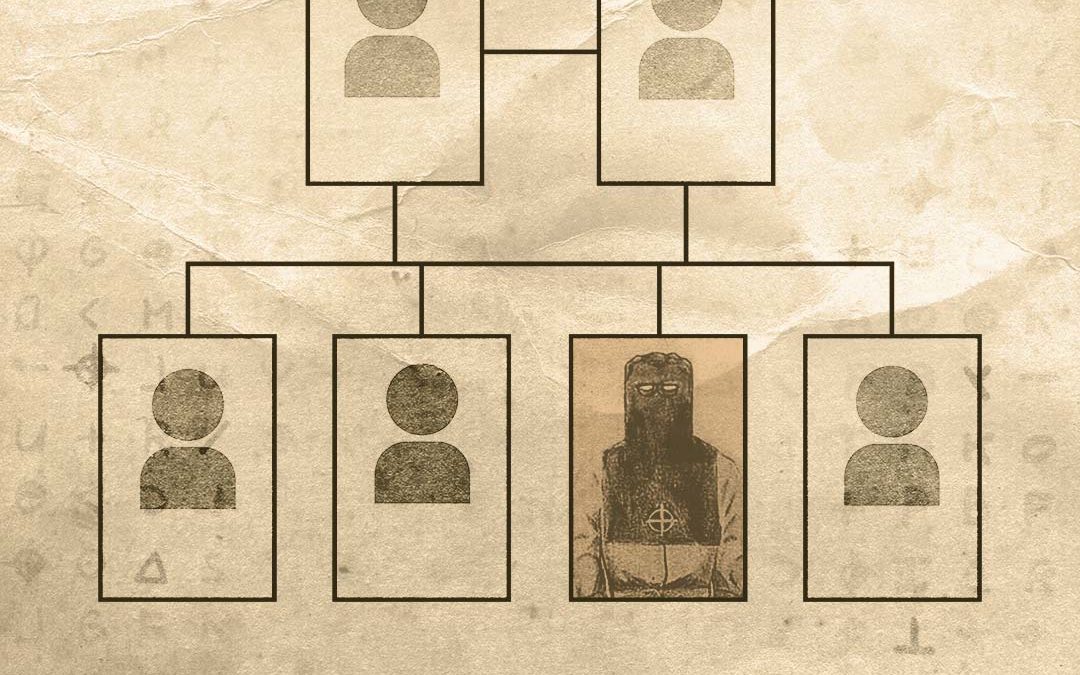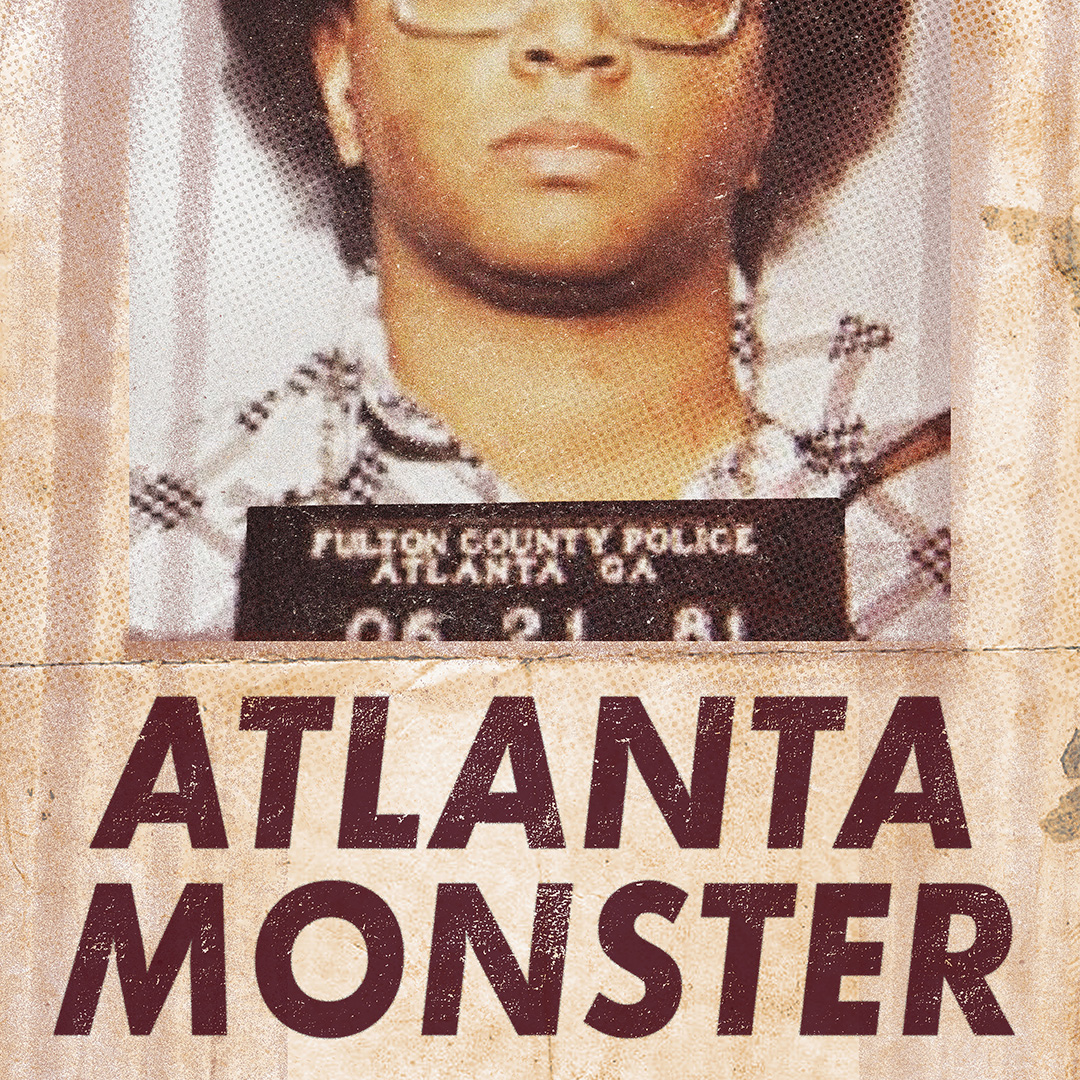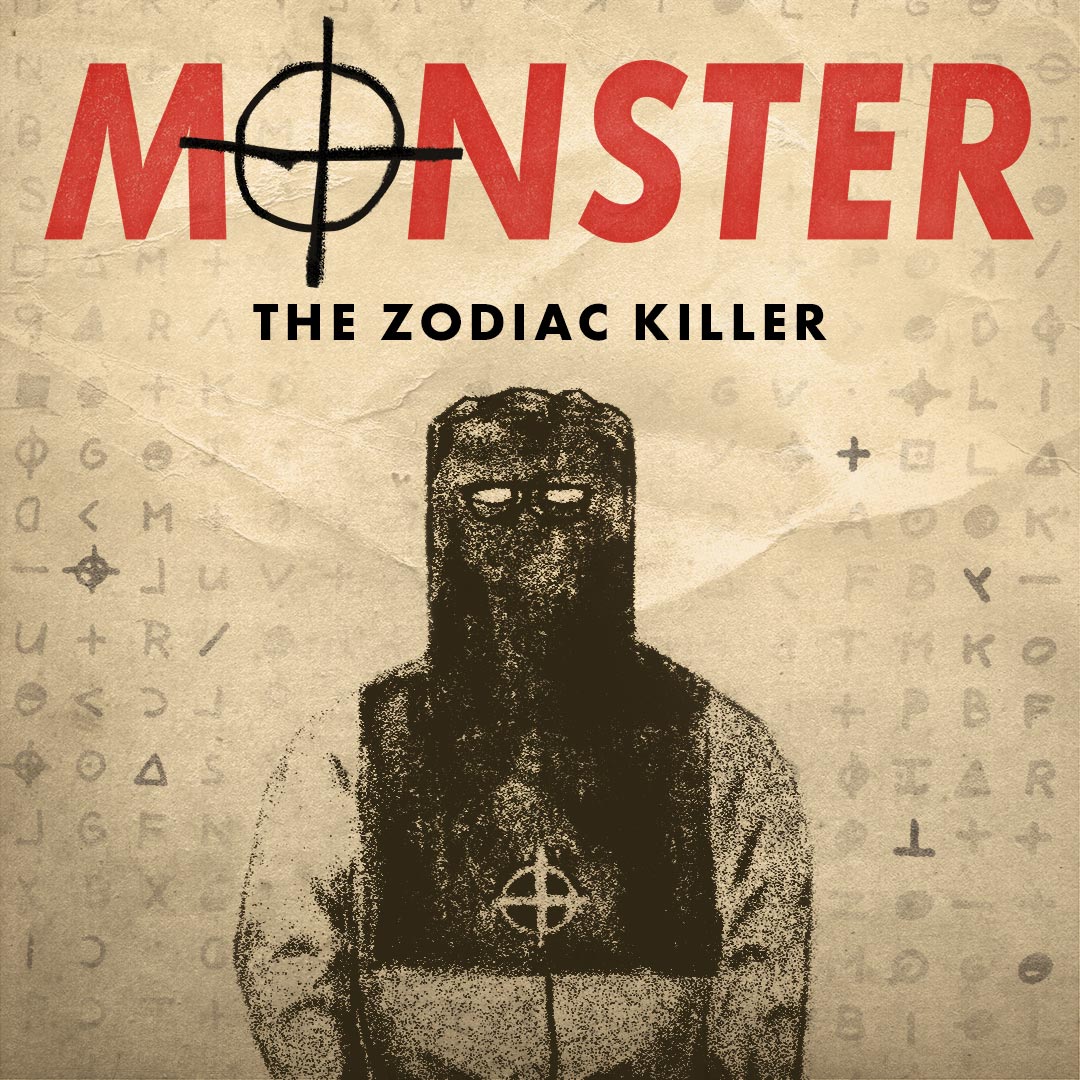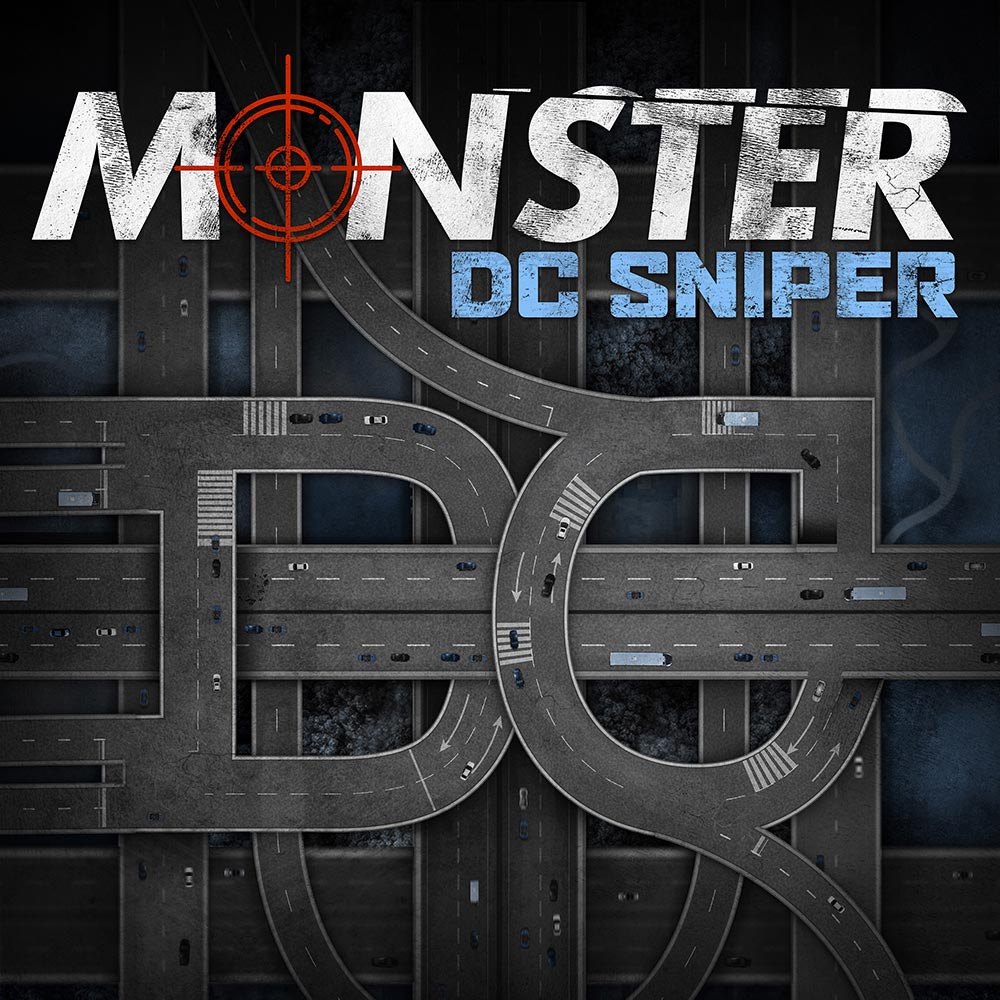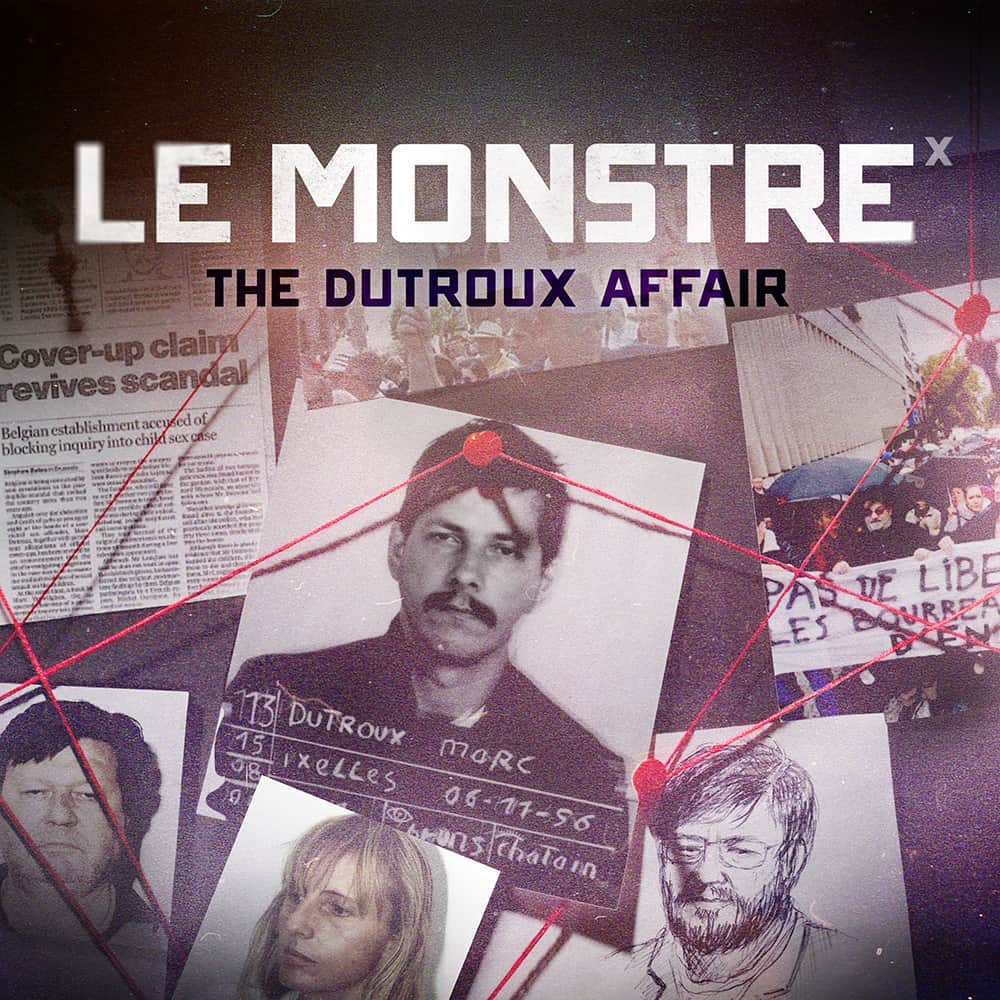14 • Sequence
New technology brings fresh hope to the Zodiac case. But what if it’s still a dead end?
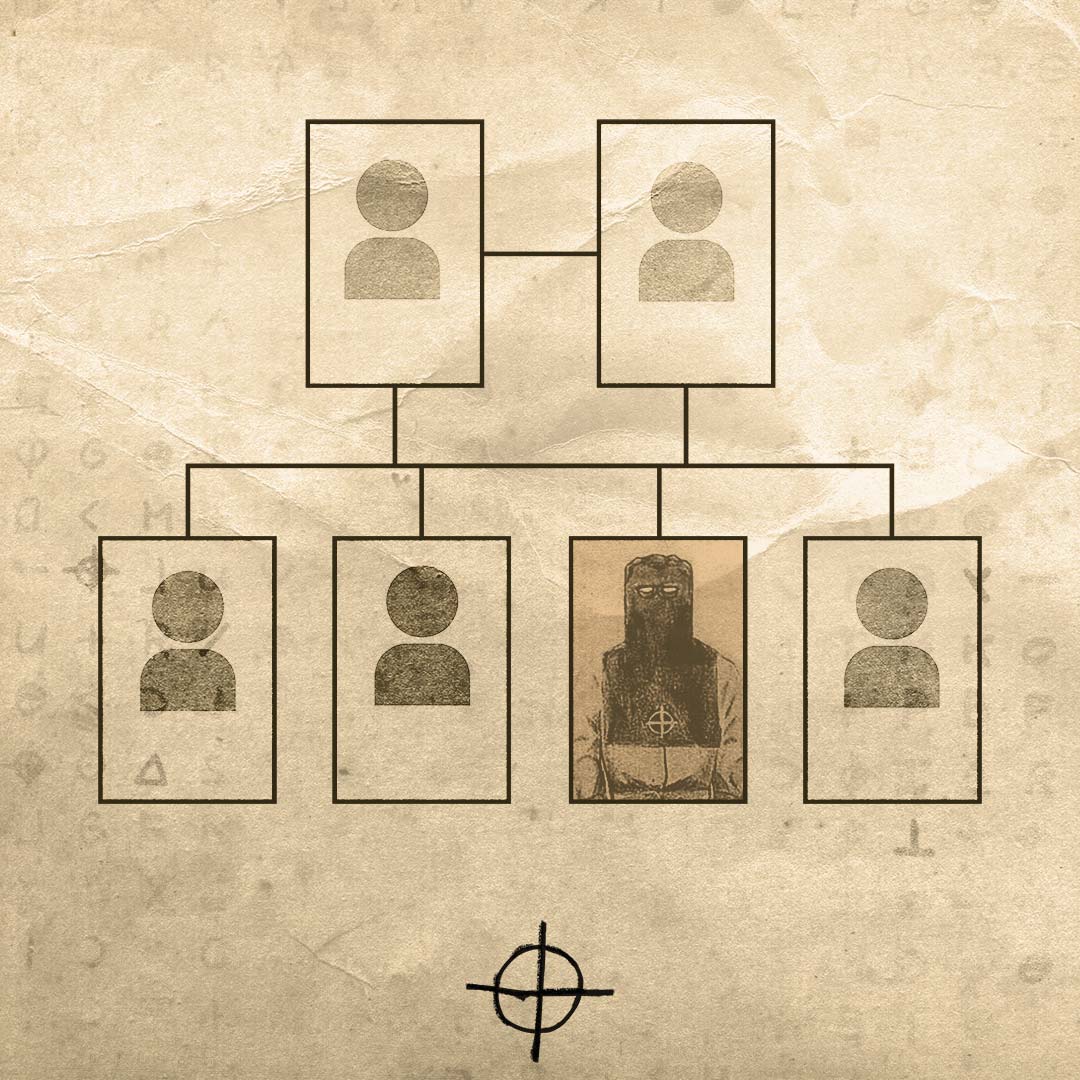
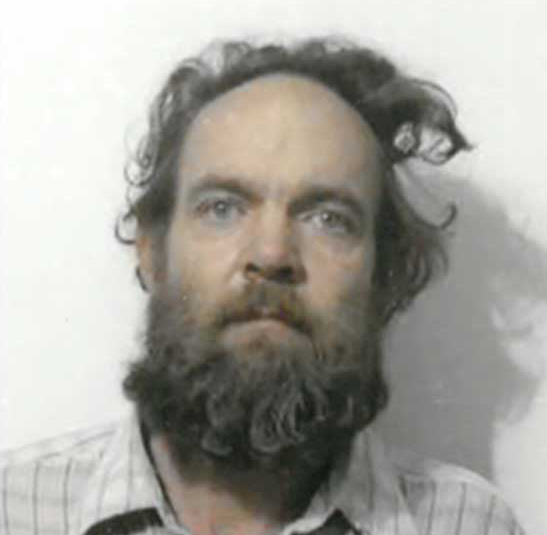
Paul Holes spent over 20 years obsessively searching for the Golden State Killer, who was also known as the East Area Rapist, the Vasalia Ransacker, and the original Night-stalker. One man thought to be responsible for over 50 rapes and a dozen murders in northern California.
Then investigators connected Larry Vanner to a different case, the Bear Brook murders, and it was on this case that Paul Holes learned how forensic genealogy could work.
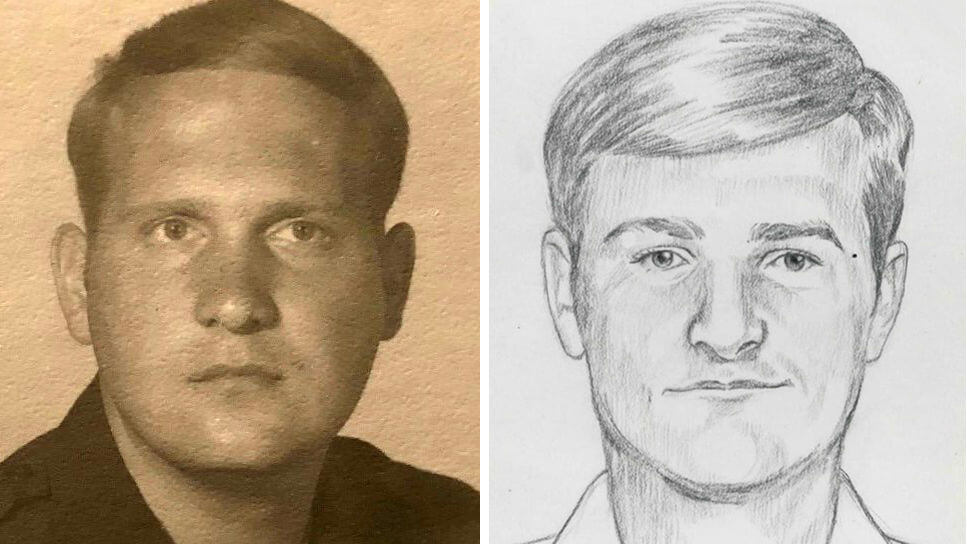
On April 24th, 2018 authorities arrest and charge 72-year-old Joseph James DeAngelo with eight counts of first-degree murder. As of this recording, he’s on trial for the crimes attributed to the Golden State Killer. Since DeAngelo’s arrest, almost two dozen other cases have been solved with the help of forensic genealogy, and that number is steadily climbing.
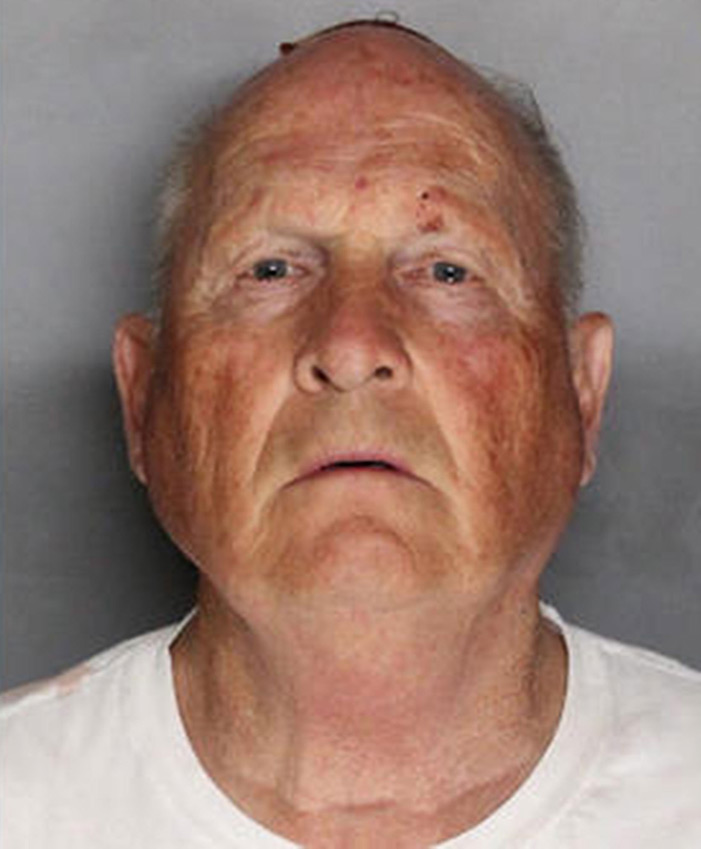
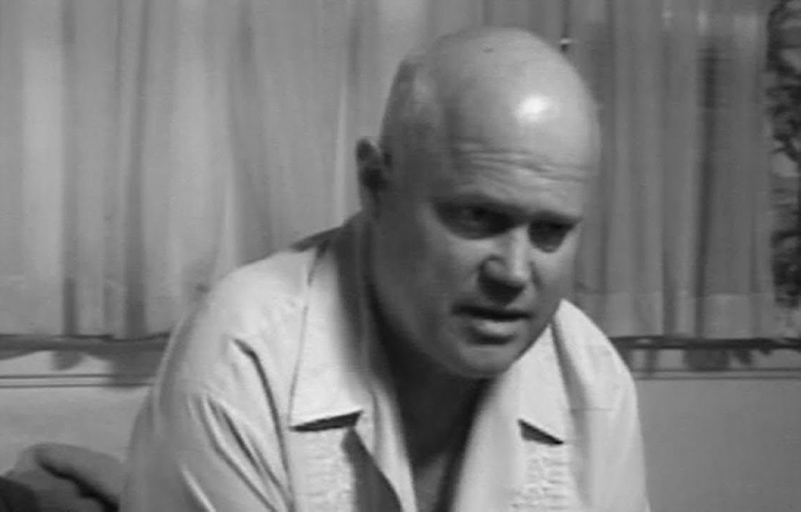
The prime suspect, Arthur Lee Allen, died in August of 1992. Authorities seized that opportunity to preserve some brain tissue for further testing.
Several years later in the late 1990s, the San Francisco Police Department submitted suspected Zodiac communications to the crime lab for DNA analysis. DNA was found on a Zodiac communication, and that DNA did not match Arthur Lee Allen.
– Michael Butterfield, Zodiac expert

But I’d like to point out that nobody is really just convicted on just DNA evidence. Even if the DNA matches, there are other things that come in like was the guy in that area, did he have a criminal record, did he leave fingerprints, is that his shirt is that his tennis shoe size. There’s a lot to it. It’s not just DNA.
– Colleen Fitzpatrick, Forensic Genealogy expert
Transcript
Narrator: The views and opinions expressed in this podcast are solely those of the podcast author or individuals participating in the podcast and do not necessarily represent those of iHeartMedia, Stuff Media, or its employees.
Speaker 1: It’s so warm in Concord tonight that people have their doors and windows open, but the police are saying “lock up tight.” Sacramento’s infamous East Area Rapist may still be in town. He raped a 29-year-old housewife near the Ignacio Valley Shopping Center at 5:30 this morning. Her husband was tied up nearby and had to listen.
Paul Holes: When you look at what the East Area Rapist was doing, he committed 15 attacks where he’s predominantly going into houses. Women would be asleep inside their houses. Sometimes these were mothers, and their kids were in another room.
Narrator: This is a retired forensic scientist and cold case investigator Paul Holes. He’s spent over 20 years obsessively searching for the Golden State Killer, who was also known as the East Area Rapist, the Vasalia Ransacker, and the original Nightstalker. One man thought to be responsible for over 50 rapes and a dozen murders in northern California.
Paul Holes: And he would always have a ski mask on. He would go to these women as they’re lying asleep in the bed, get them flipped over to where they’re face down, and tie their hands behind their back. As he’s doing this, he’s talking through clenched teeth, and telling them “You need to do what I say, or I’m going to kill you.”
continue reading
Paul Holes: He planned his attacks. He employed solid tactics. He often would approach the house from one direction and leave the house in a different direction, so if there were witnesses seeing him coming, they didn’t see him going or vice versa. He would park his car many blocks away. During the canvas, of course, law enforcement is going out talking to neighbors, and “Hey, did you see any strange vehicles parked out front?” Nobody ever really saw his vehicle because it was parked so far away. So very tactically sound.
Speaker 2: A man in a mask robbed, tied, and stabbed them, leaving them for dead.
Speaker 3: The subject stated, “I want to report a murder. No, a double murder. I did it.”
Speaker 4: A man who wore a medieval-style executioner’s hood carried a knife and gun, and intended to use them.
Speaker 5: They haven’t arrested me because they can’t prove a thing. I’m not the damn Zodiac.
Speaker 2: Who is the Zodiac, and where is he?
Narrator: From iHeartRadio, How Stuff Works, and Tenderfoot TV, this is Monster: the Zodiac Killer.
Narrator: How investigators solve cases is constantly changing with improved technology. The most recent game-changer, forensic genealogy. The technique uses a mix of genetics and family trees. It’s helped solve a growing list of decades-old cases. The capture of the alleged Golden State Killer has made forensic genealogy famous, and it’s this case that has breathed new life into the hunt for the Zodiac killer.
Narrator: For several years, Paul Holes had almost no success with the Golden State Killer case. Every suspect and every tip would eventually lead to a dead end. It wasn’t until Holes was working a completely separate case that ended up connecting to another case that he encountered forensic genealogy. Holes takes us back to the very beginning of that sequence with the murder of Eunsoon Jun. She was killed by her boyfriend, Larry Vanner.
Paul Holes: In February of 2017, this is five months after my last prime suspect was eliminated. I’m in the doldrums, but I have a conference call on another case that I had been involved with. It was a 2002 homicide, and an Asian female had been bludgeoned to death, buried underneath her house with kitty litter piled on top of her. We had always referred to it was the kitty litter case, and very quickly after this case, her live-in boyfriend Larry Vanner had been arrested.
Paul Holes: Larry Vanner was interesting in that we could never identify really who he was. Larry Vanner wasn’t his real name. He had 10 different names, and we couldn’t tell which one he had been given at birth. He had many different birthdays that he had given law enforcement over the years, different social security numbers. He was a mystery man.
Narrator: Then investigators connected Larry Vanner to a different case, the Bear Brook murders, and it was on this case that Paul Holes learned how forensic genealogy could work.
Paul Holes: It was two 55-gallon barrels, one found in 1985, another found in 2000. In one barrel was an adult female and a little girl, and the other barrel was two little girls, so that was a family that had been killed. But the other child in that second barrel wasn’t related to this family. Through DNA, they showed that that other child was the biological child of Larry Vanner. And then ultimately, he’s caught killing Eunsoon Jun in 2002 in Contra Costa County. Amazing case. I’m going, I’ve got to figure out how this technique is done, and how can I use this to catch the East Area Rapist, a.k.a the Golden State Killer.
Narrator: Forensic genealogy is a layered technique. At the base, it’s a map of an individual’s DNA profile. Private genealogy companies began selling personal genetic profiles in the early 80s. At the time, it was a niche market, but it’s grown in popularity in recent years. One of these companies, 23andMe, now boasts around five million customers worldwide, so the team and I visited their headquarters to learn more about their product.
Kate Black: My name is Kate Black. I am the global privacy officer and senior counsel at 23andMe.
Kate Black: 23andMe is a consumer genetics testing service, so anybody can order a test online, spit in a tube … It’s quite a large bit of spit. It takes about 30 minutes to fill up the whole tube. Send that off in the mail to one of our laboratories, and then within usually eight weeks get an account rich with reports and information about their DNA selves. Everything from ancestry, like your ethnicity breakdown, where your ancestors were from, as well as health and wellness related information, like traits, how you may respond or react to caffeine consumption, and more of serious health results like whether or not you have the genes associated with late-onset Alzheimer’s.
Kate Black: Our mission is really to give people full access to understand their genetics and their genetic self, and that absolutely requires an enormous amount of trust in us as a brand and a company. We take privacy very seriously. We want to make sure that we are not only upholding our own ethical standards and privacy requirements, but also that we’re meeting the expectations of our customers, and understanding that they’re not just a customer or data point. They’re really a person with a variety of different things that may have brought them to us, and that we can fulfill that journey for them in a way that won’t be surprising, or unnerving, or have unintended consequences.
Narrator: Around the same time 23andMe got its start, so did forensic genealogy.
Colleen F.: I think DNA is the most conclusive evidence we have at the moment.
Narrator: This is Colleen Fitzpatrick, owner, and founder of IdentiFinders International. It’s a company that uses DNA for a number of services, including finding missing persons and assisting law enforcement. If anyone knows about DNA, it’s her.
Colleen F.: Well, I’m the founder of modern forensic genealogy. I wrote the book, and when I wrote the book in 2005, it created a revolution. It went forward into the forensic community itself to mean the application of genealogical techniques in support of the legal system.
Colleen F.: At first, I was having fun with the hobby side, identifying old photographs, helping people look at their records and squeeze the juice out of them that they didn’t know was there. But then, because of my science background, I started to be hired for some real cases, some really interesting cases.
Colleen F.: I was contacted by the Armed Forces DNA identification laboratory to help them identify a frozen human arm and hand in a glacier in Alaska, and that became the “Hand in the Snow” case, which I was very important in solving. And then from there, went into the Titanic baby, and Amelia Earhart. Those kinds of cases became really more accessible and interesting with DNA developments. I worked about 75 cases in 30 countries, and I got almost all of them.
Narrator: Paul Holes learned about forensic genealogy during the Bear Brooks case, and he used the technique to catch the alleged Golden State Killer, but how exactly does the process work? We gave him a call.
Paul Holes: What we were working with was a semen sample off of the victim’s vaginal swab. Right there, the DNA that we’re interested in is contained within the sperm heads of the semen, and it’s mixed with the female’s DNA. So now you need to have a law enforcement lab, those forensic analysts who are very well versed at this process, you need them to go in and separate out the Golden State Killer’s sperm DNA from all the victim’s DNA that’s on that vaginal swab.
Narrator: Once the Golden State Killer’s DNA was isolated, it was sent to a private lab, and at the lab, an SNP profile was created.
Paul Holes: SNIP profile, S-N-P for single nucleotide polymorphism. It’s just basically a testing process that looks at hundreds of thousands of single points of DNA across the genome in order to kind of map the genome out in a partial way.
Narrator: Turnaround time can be anywhere from two weeks to two months depending on the lab. Holes says it’s still faster than some forensic labs, which can get caught in backlogs. The information is then uploaded into GEDmatch, a public online database that compiles info from multiple DNA sites. GEDmatch also shows relationships between DNA profiles. That’s because the original purpose of GEDmatch was for people to research genealogy and build family trees. But since it’s public, it also means law enforcement can use any of this data in their investigations.
Paul Holes: GEDmatch tells you … It takes generally 24 to 48 hours for their servers to, in essence, does the algorithms. I found with the Golden State Killer that within 24 hours after upload, I had my initial search results. How closely or distantly you’re related is dependent on how much DNA you share. Our top results only shared less than one percent of their DNA, which was on the order of roughly a third cousin.
Narrator: From here, traditional genealogy works kicks in, like hunting down birth certificates and death records to trace family lineage.
Paul Holes: There was five of us on our team on the law enforcement side, and then we had the genetic genealogist, Barbara Rae-Venter, was the one who was-
Paul Holes: The genetic genealogist Barbara Rae-Venter was the one who was guiding us. The five of us were the ones that were really building the trees, and Barbara was checking in. The tree that we ultimately linked together where we found the Golden State Killer, Joseph DeAngelo, the common ancestors have been born in the 1840s. Once we started identifying all their descendants, that family tree very quickly grew to have well over 1,000 individuals entered into this tree. Most of them were long dead because they’re just ancestors, but you have to identify everybody. You don’t want to miss the one person who could potentially be the parent of your offender. It took us four and a half months, from the time we got the initial DNA search results to the time that DeAngelo was taken into custody.
Narrator: Holes is adamant that this genealogy only provides an investigative lead. He says once a suspect is identified, law enforcement still needs to secure a direct DNA sample. Then that direct sample is compared to the original sample used in the forensic genealogy process. This is done in case an error is made while building out the family tree.
Paul Holes: DeAngelo, even though we kind of identified him, he had some circumstantial evidence that seemed to corroborate that he could be the guy, he was like, “You’ve got to get that direct DNA sample.” So, he was put under surveillance, and then the first DNA sample was collected, and it was enough to basically tell us he’s the guy, but we needed to get a second sample due to some of the complexities of the first sample. The second sample left no doubt he matched 100% to the Golden State Killer’s DNA.
Paul Holes: As I was working through this case, I’m looking to see, “Well, is there DNA?” I had this newfangled DNA technology, and I was able to find three cases out in Contra Costa County that still had evidence, the DNA evidence, that had been collected from the women’s bodies from back in the day. I was able to get DNA from each of those three cases, and the DNA profile from those three cases was the same. I’m sitting at PF Changs, and Kirk Campbell from Sac DA’s office calls me. Kirk opens up by saying, “Paul, you absolutely cannot tell anybody this.” So immediately I knew, okay, this is going to be a different phone call, and then he said, “I don’t know exactly what the lab has, but they’re really excited.” I was asking, “Well, what did they tell you? What did they say?” “They said we’ve only got a partial DNA profile, something about 20 markers.” “It’s him. Kirk, it’s him.” So now we’re sitting in our rental Jeep Cherokee in the PF Chang’s parking lot.
Paul Holes: It’s an oh my god type of moment, and then Steve Kramer, my partner from the FBI calls. He’s on the speaker in the Jeep, so my wife is hearing Steve and I now strategizing about what are the next steps, what are we going to do now, do I need to get on the next flight out of here?
Speaker 6: For over 40 years, countless victims have waited for justice. Yesterday, an arrest warrant was issued, a complaint was filed, charging that individual with two counts of murder. The answer was, and always was going to be, in the DNA.
Narrator: April 24th, 2018 authorities arrest and charge 72-year-old Joseph James DeAngelo with eight counts of first-degree murder. As of this recording, he’s on trial for the crimes attributed to the Golden State Killer. Since DeAngelo’s arrest, almost two dozen other cases have been solved with the help of forensic genealogy, and that number is steadily climbing. However, this new technique is already stirring debate.
Paul Holes: Most people of course that are against it, it’s a privacy concern. The fourth amendment, unreasonable search against their genetic information. People in the genealogy databases did not explicitly consent to allow law enforcement to search their genealogy DNA profiles in order to help solve a case.
Narrator: Companies like 23andMe and Ancestry have policies to keep law enforcement from directly accessing their private databases, but for public databases like GEDmatch, there aren’t any laws regulating searches.
Paul Holes: There’s a lot of people out there that, of course, is very upset about law enforcement utilizing this tool, but I think because of the kinds of cases that are being solved with it, that there’s a balance in terms of people’s perceptions, society’s acceptance of the tool being used.
Narrator: Paul Holes says what people are afraid law enforcement has access to is very different compared to what they actually have access to.
Paul Holes: I never had access to anybody’s DNA profile in the database. In order for me to see their genetic information, for me to invade their genetic privacy, I have to have access to their DNA profile. I never had that. All I got were search results of people who shared a percentage of DNA, and the results only tell me how much DNA they shared.
Narrator: Still, some privacy advocates are worried that this technique will cause more innocent people to be targeted as possible suspects. At least that’s the reasoning behind the bill Maryland lawmakers introduced in January 2019. If it passes, it would completely block Maryland law enforcement’s ability to use forensic genealogy. More specifically, investigators would be banned from using DNA databases to identify unknown DNA found at crime scenes. Paul Holes argues forensic genealogy is less invasive than typical police work.
Paul Holes: Through the use of genealogy in the Golden State Killer case, we saved hundreds of men from having the government take possession of their DNA. Considering traditional law enforcement investigations, we were having women calling in saying, “You know, my ex-husband looks like this hand-drawn sketch of the Golden State Killer from 1978. I think he might be the guy,” and then we’d go on to her ex-husband’s house, knock on his door, and actually ask for his DNA. We took possession of his DNA sample. Through the use of genealogy in the Golden State Killer case, we saved hundreds of men from having the government take possession of their DNA. So, it’s that balancing act of, okay yeah, we’re searching a genealogy database. We’re identifying people who are relatives based on their DNA, but the intrusion is minuscule compared to how legally law enforcement works every single day across the nation.
Narrator: Holes also argues forensic genealogy isn’t a tool to be used regularly.
Paul Holes: Use it on your homicide cases, your sexual assault, your serial sexual assault cases, or if you have that active, public safety threat. You know this guy has killed somebody. You don’t know who he is. He’s left his DNA, and he is out there potentially going to kill other people. That’s the type of thing where you bring in this tool as the last resort. You think of it as the nuclear weapon, and you go, and you try to figure out who this guy is using the genealogy in order to get him in custody before he can rape and/or kill somebody else.
Narrator: Holes does see where concerns could rise.
Paul Holes: If law enforcement expands its use into everyday crimes, I think that’s where you’ll see the balance shift where people are going to start getting uncomfortable with it, and that’s where legislation will come in and restrict law enforcement’s use.
Narrator: Holes says at the end of the day-
Paul Holes: People who are decision-makers need to understand what the investigative genealogy technique is and what it isn’t before they pass laws based on perception.
Narrator: In the Spring of 2018, confirmed Zodiac letters were sent to a lab for DNA testing. The hope was to pull enough DNA for a full genetic profile, and then use that profile for forensic genealogy. This isn’t the first time law enforcement has turned to DNA for answers in the Zodiac case.
Michael B: The prime suspect, Arthur Lee Allen, died in August of 1992. Authorities seized that opportunity to preserve some brain tissue for further testing.
Narrator: This is Zodiac expert Michael Butterfield.
Michael B: Several years later in the late 1990s, the San Francisco Police Department submitted suspected Zodiac communications to the crime lab for DNA analysis. According to retired inspector Vince Repetto, DNA was found on a Zodiac communication, and that DNA did not match Arthur Lee Allen. Several years later in 2002, San Francisco police inspectors Mike Maloney and Kelly Carol submitted suspected Zodiac communications to the crime lab for further DNA testing. Doctor Cyndi Holt of the San Francisco police DNA lab examined the Zodiac letters and envelopes, and she stated that a partial genetic profile was found on an envelope sent with a Zodiac communication in November of 1969. According to Holt, that sample was sufficient to exclude suspects, but not sufficient to positively identify anyone.
Narrator: However, some critics didn’t believe law enforcement had found a partial DNA profile. They believed it was all for show.
Paul Holes: I was shown the DNA profile that they obtained when I went out to San Francisco PD at one time. So, I saw what they actually got. They did get a low-level of DNA profile.
Narrator: But Holes says there were other concerns as well.
Paul Holes: There’s no confidence that you could say it was actually the offender’s DNA. If the Zodiac, for example, licked the stamps, licked these envelope flaps of the letters that he sent in, why can’t they get his DNA? You also have to be concerned about, well, who’s DNA is actually on those items? They’re sent in after the fact. They’re not present at the crime scene where you know the offender was at. I had an old-time Vallejo detective, he had some involvement in Zodiac back in the day, and he goes, “Yeah, I remember growing up as a kid, going into the post office to mail a letter back in the late 60s, and you’d hand the guy an open envelope. He would lick the envelope, and he would lick the stamp. Well, who’s to say that didn’t happen with these particular envelopes and stamps that were sent in?” So, how can we say for sure that if they do get DNA from these secondary or peripheral items of evidence that it’s actually Zodiac DNA?
Paul Holes: I would have greater confidence if they get the same DNA profile from multiple items like that. Then that looks like it’s probably the originator of that evidence versus a secondary person that handled that evidence. I sure would like to see primary evidence in the Zodiac case produce a DNA profile.
Paul Holes: The Zodiac case produced a DNA profile.
Colleen F.: Well, with DNA, you never know. You just never know, and you never know the power of what your testing is. But if it’s kind of a degraded or low-level sample, you can be surprised.
Narrator: This is Colleen Fitzpatrick again. One of the cases she worked on was the so-called unknown child of the Titanic.
Colleen F.: We had to do multiple rounds of testing on that. We really didn’t have a lot of DNA to start with, and at the end, somebody told me or my understanding was there was enough DNA for one cell of that child’s body left, and that’s what did the trick. So that was using 90 years old, 80/90-year-old DNA that had been in the ground in Halifax, Nova Scotia, and it had been exposed to acid rain for as long as that’s been around. And yet there was enough DNA in that baby, a baby’s body, to make the identification.
Narrator: Here’s another example of degraded and contaminated DNA that was still usable.
Colleen F.: We had a buckskin girl under the dope DNA project that was from a blood sample that was 37 years old. It had been doped with heparin to keep it from coagulating, and it had not been refrigerated for 37 years, and it worked like a charm. So you know when you don’t think it’s going to work, it does. So you never can tell with DNA. And with the Zodiac and the stamps, you never can tell. It’s worth trying.
Narrator: We wanted to know more about these stamps. Does a small amount of saliva typically provide a good DNA sample?
Colleen F.: That’s a really interesting question. I don’t think there’s enough data in recent months to say one way or the other. I’d say a definite maybe because, again, you never know. I know I had talked to a lab extensively at one time about somebody will grab a coffee cup, can you get the DNA off that? Basically, they said that’s a low probability, high risk. Whereas if you had DNA like from fingernails or under fingernails, that was a higher chance and a lower risk. And I think this stamp is probably medium because you never can tell where the stamp has been.
Narrator: As Paul Holes said earlier, it takes more than DNA for these cases to be solved.
Colleen F.: But I’d like to point out that nobody is really just convicted on just DNA evidence. Even if the DNA matches, there are other things that come in like was the guy in that area, did he have a criminal record, did he leave fingerprints, is that his shirt is that his tennis shoe size. There’s a lot to it. It’s not just DNA.
Elizabeth Cook: Now at 11, the new hunt for the Zodiac Killer. Tonight, Bay Area Police may have found the key to finally cracking the case. Good evening, I’m Elizabeth Cook.
Ken Bastida: And I’m Ken Bastida. First, the suspected Golden State Killer. Could the Zodiac Killer be next? KPIX5’s Andria Borba joins us from the newsroom with a decade’s old evidence getting new attention tonight. Andria.
Andria Borba: Well, Ken, Elizabeth, the Zodiac Killer’s responsible for at least five murders in the late ’60s and early ’70s. Tonight, the case that was considered all but unsolvable may have new legs.
Andria Borba: The Zodiac Killer who’s killing spree and ciphers around the Bay Area draw worldwide attention to this day, maybe weeks away from being unmasked. The Sacramento Bee reports that Vallejo Police have submitted letters and envelopes from the Zodiac Killer to a private lab to obtain a DNA profile. The hope that those envelopes he licked closed years ago might be the final piece to crack the case.
Andria Borba: The lead Vallejo detective in the Zodiac case told the Sacramento Bee he hopes to use the same open-source DNA database technique that helped identify Joseph DeAngelo as the suspect in the Golden State Killer Case.
Andria Borba: Now those DNA results are expected in a few weeks. In the newsroom, Andria Borba, KPIX.
Narrator: It’s been almost a year since investigators sent the Zodiac’s letters to a lab for DNA testing. While this is promising, it’s been hard for us to find much new information. Here’s Officer Ryan Railsback of the Riverside Police Department.
Ryan Railsback: This case is still technically open even though it occurred back 50 years ago plus, it is still open because it hasn’t been solved. We haven’t had any real updates on this case in many years.
Narrator: And here’s Lieutenant Joseph Iacono, Vallejo Police Department’s Detective Division Commander.
Joseph Iacono: The case is open. So we will not release specifics regards to where we are just because of obviously the investigative integrity of the case.
Narrator: San Francisco reporter Kevin Fagan wrote an article about the Zodiac for the 50th anniversary in December of 2018. In it, an anonymous police source says, “With the Golden State Killer, they had a full strand of DNA. Not Zodiac. We have crumbs and not good ones.”
Narrator: Paul Holes agrees.
Paul Holes: The critical step, in that case, is they need to find DNA from the Zodiac. As of the best information and the most recent information I have, they were still looking. Everybody’s saying, “Oh, investigative genealogy’s going to solve Zodiac.” Well, first you have to have the Zodiac’s DNA. As of the information that I know, and it’s dated, they haven’t recovered that yet.
Narrator: And as for the DNA found in the early 2000s, Paul Holes explains it’s the same problem.
Paul Holes: What I saw was it was so scrappy that I probably with DNA interpretations today, they may not be even allowed to use such a low-level DNA profile for comparison purposes. It’s so low level is it due to some environmental contamination either on the outside surface of the stamp, somebody’s handled it during the DNA process itself and has nothing to do with the Zodiac’s DNA. They need to get a better sample in my opinion than what they actually obtained back in the day.
Narrator: Holes is talking about federal regulations placed on testing DNA.
Paul Holes: The FBI and the Scientific Oversight Committee governs all forensic testing labs and how they do their DNA testing and how they interpret the DNA results, and in many ways, it’s to help standardize the interpretation of these DNA profiles that often are very complex. So over time, these interpretation guidelines have become more and more strict because just learning from real-life case examples, they saw where the more lax interpretation guidelines could cause misinterpretations to occur, and so they said, “We can’t have that. We need to be as conservative as possible because we don’t want to falsely incriminate somebody by misinterpreting a DNA result.”
Narrator: Investigators have been working on this case for decades. Everyone wants to see it solved, but ultimately everything hinges on the DNA.
Paul Holes: If they find the Zodiac’s DNA, then it becomes a solvable case. If they don’t find his DNA, the chances of it being solved become almost zero.
Narrator: Next time on Monster: The Zodiac Killer …
Speaker 7: Of course there have been theories over the years that they invented the Zodiac to sell more newspapers.
Speaker 8: Sent the letter to the paper, he said to prove that I’m who it was that killed him. I’ll tell you one of the things I know, and the police know, but if you go through and read the police reports, it’s almost word for word verbatim on what the police said in the police reports, and exactly what I heard the police say on the radio that night.
Speaker 9: Popular culture about serial killers is not dedicated to making us ask difficult questions. Instead, it gives us easy answers. That’s what we find appealing about it.
Speaker 10: There’s nothing fun about murder. And wacky ciphers and letters that taunt and say, “I like hunting the most dangerous game,” I agree. Guy belongs in freaking prison.
Speaker 11: If I could go back and give myself some advice when I was first starting out, be skeptical of everything.
Narrator: Monster: The Zodiac Killer is a 15 episode podcast produced by iHeartRadio, HowStuffWorks, and Tenderfoot TV. Our executive producers on behalf of Tenderfoot TV, alongside producers Meredith Stedman, Mason Lindsey, and Christina Dana. Jason Hope is the executive producer on behalf of HowStuffWorks, along with producers Trevor Young, Miranda Hawkins, Ben Kuebrich, and Josh Thane. Scott Benjamin provides additional voice talent. Matt Frederick is our host. Original music is by Make-Up and Vanity Set. If you haven’t already, make sure to check out the first season of Monster called Atlanta Monster, about the Atlanta child murders in the late ’70s to the early ’80s. Download the 10 episode season right now.
Narrator: Have questions or comments? Email us at monster@howstuffworks.com, or you can call us at 1-833-285-6667. Thanks for listening.
Episodes
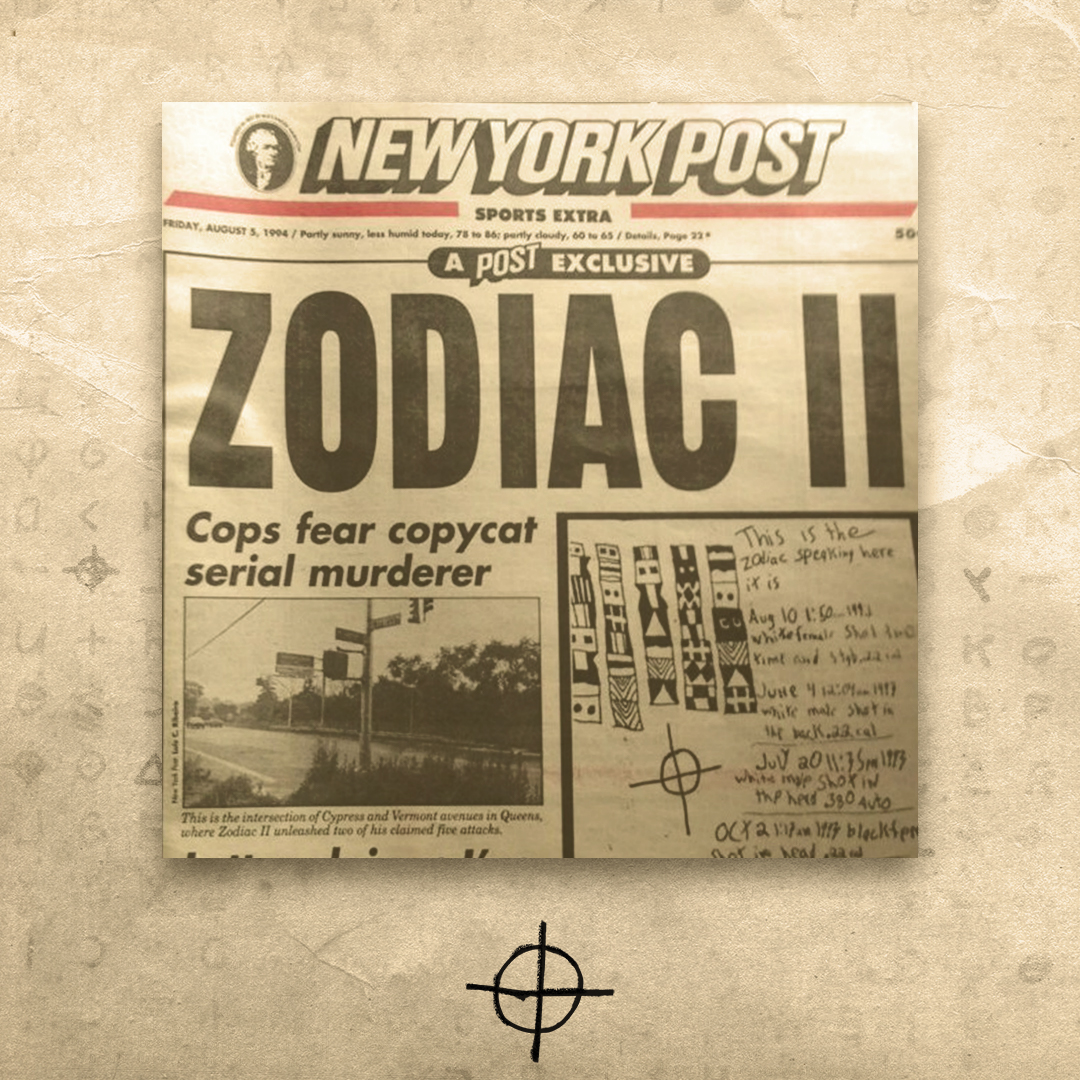
13 · Copycat
Fascination leads beyond obsession, as a new Zodiac emerges in New York City.

14 · Sequence
New technology brings fresh hope to the Zodiac case. But what if it’s still a dead end?

15 · Legacy
A frightening final theory.
